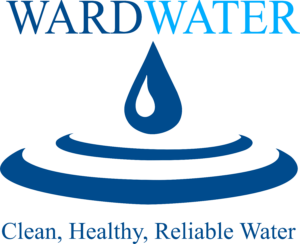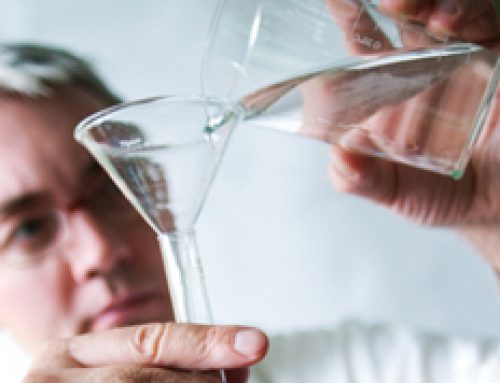I’m guessing the chlorination of your well is probably one of the last things on your mind during a busy day of hectic work and family responsibilities. Believe me I do understand!
But, I will also tell you that assuming your drinking water is clean, healthy and free from harmful bacteria such as Coliform and Ecoli might turn out to be a costly mistake-one which could have been quite easily avoided.
What are Coliform & Ecoli?
Coliform bacteria are part of an overall group of many different kinds of bacteria. These bacteria are found in soils, on plants, and also reside in ground surface water.
Bacteria in a well is generally caused by ground water which has been contaminated by decayed organic material, animal/human fecal waste, or other materials making their way underground into our drinking water supplies.
Chlorination | Health Risks of Drinking Water with Ecoli and coliforms?
According to the Maine Center for Disease Control “consuming water containing ecoli and fecal coliforms can cause intestinal upset as well as diseases such as dysentery, hepatitis, and giardiasis…if your water was positive for coliforms and the water was not tested by the lab for E. coli or fecal coliforms, you cannot be sure they are not there and you should take precautions by boiling the water or disinfecting.”
If we’re not careful, one day we could turn on our kitchen’s faucet and have clean, healthy drinking water-and the next day, well, we might not be so lucky.
For more information on chlorination and well water bacteria, visit the Maine Center for Disease Control.
When Should Well Chlorination be Done?
1. Selling a Home
A very large percentage of the work Ward Water performs is in some way connected to the purchase or sale of a home. Inevitably a buyer/seller or their real estate agent has contacted us regarding either testing a home’s well water supply or fixing problems as a result of poor water quality test results coming back after the buyer’s home inspector has performed the normal water testing procedures.
Positive bacteria results are one of the most commonly failed test results we see on a day to day basis. These will inevitably slow or postpone the closing of a home sale.
In most cases receiving a “positive” or “unsuitable for drinking” notation on test results forces a home seller under the gun. He/she is now responsible for undertaking the last minute task of chlorinating the well and performing re-testing to verify that the well is safe and free of bacteria. These steps can take anywhere from a few days to, in some cases, 1-2 weeks to rectify. This can be an eternity in terms of a real estate closing.
By knowing in advance that your buyer will most likely be testing your home’s well water supply as part of the purchase and sale agreement, you can save a tremendous amount of time, aggravation and possibly even money by being a little proactive.
The lesson: Test and/or Chlorinate before you need to!
2. Illness Symptoms (see Health Risks above)
Let me preface this section by saying that we are water treatment professionals-not doctors. If you have medical concerns, by all means, please consult with your doctor if you have health related issues.
Having said that I will also say that drinking clean, contaminant free drinking water is a no-brainer when it comes to living a healthy life.
About 2 years ago my wife and I started noticing some fairly uncomfortable and frustrating digestive issues (I’ll spare you the colorful details). The symptoms seemed to hit us both at almost the same exact time and went on for several weeks.
Being a water treatment professional the first and most obvious thing that made me suspicious was our home’s drinking water. So, I tested our well water.
Sure enough, we had bacteria!
Obviously, working in the water treatment industry, Chlorination was my knee-jerk instinct to try and solve our problems. It proved to be a correct instinct.
Within days of chlorinating and re-testing our water, both of our unpleasant symptoms quickly began to dissipate. The issues never returned for either of us.
Coincidence you might ask? Maybe so, since neither of us ended up visiting a doctor for testing (I know…I should take my own advise) we will never know for sure. But, seeing what I see on a daily basis associated with poor drinking water quality, I would definitely lean toward the “my drinking water was the cause” side of the fence!
3. Chlorination during your Annual Water Test
When was the last time you tested your family’s drinking water? Was it 1 year ago, 2 years, 3…maybe never???
If you fall into the latter category of never, don’t beat yourself up too badly. It’s amazing how few people are aware that they need to consider this question. Prior to working in the water treatment industry I had never even thought about doing a water test for my own home, other than the one that was performed by my home inspector at the time of sale.
I figured: “Hey, it passed with flying colors 3 years ago-why would I need to do it again?”
The truth is that water supplies can change…in some cases quite frequently. A number of factors can greatly influence a well’s water quality that most of us wouldn’t even think about.
- Rain accumulation, drought and water table levels effect most private well water supplies
- The underground “upstream” sources that feed our wells can literally change on a daily basis
- Well casings and underground supply lines can become damaged allowing bacterial contaminants to enter our home’s water supplies
- Nearby construction, blasting, “fracking”, agricultural run-off and other environmental disturbances can contaminate our well water-thus turning a once reliable and healthy water supply into a potentially dangerous source of life support, without us even knowing it.
Water Testing and Chlorination doesn’t have to be an “after the fact” step.
According to The EPA http://water.epa.gov/drink/info/well/whatyoucando.cfm you should test your well water for bacteria and other potentially harmful contaminants at least once per year.
We feel this is extremely sound advice.
In fact, many of the clients we work with take things to the next level and chlorinate their well water every 1-2 years, regardless of test results.
After many of these homeowners have gone through significant personal and/or health related issues as a result of bacterial contamination they would simply rather prevent a problem from happening now, before it has a chance to become a problem down the road.
Remember when mom used to say “better safe than sorry?”
Looking back, maybe mom really did know what was best for us after all!





